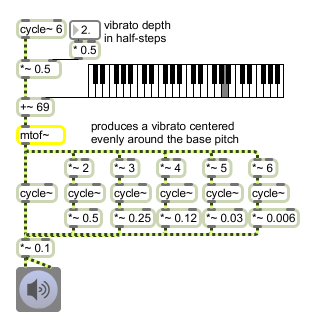


at 17:00 updated : reoriented descending, conforms to MIDI naming standard MIDI Note Number, Frequency Table.
#Midi note number to frequency professional
The 0 to 127 numbering is usually only used internally by the synthesizer the vast majority of MIDI devices, digital audio workstations and professional MIDI sequencers display these Program Numbers as shown in the table (1–128). Some of the important new MIDI 1.0 specifications are the "MIDI Polyphonic Expression (MPE) Specification", and the "MIDI Capability Inquiry Messages", both of which can be downloaded on the "MIDI 1.0 Detailed Specification" page. The MIDI 1.0 Specification is actually a collection of documents that define MIDI messages (and recommended practices) adopted from 1983 onward. This leaves only 7 bits available for the rest of the status or data byte value. If the first bit is 0, then it is a data byte. If that first bit is 1, then it is a status byte. The way to determine the difference between them is by the first bit. In the MIDI protocol there are status bytes (think commands, such as note-on or note-off) and there are data bytes (think parameters, such as pitch value and velocity). The most common is the one below where MIDDLE C (note #60 $3C) is C3 (C in the 3rd octave). MIDI Note/Key Number Chart There are TWO conventions for numbering keys (notes) in MIDI. And xbendout gives you have high precision. You'd have to convert frequency to a midi note number and a certain amount of pitch bend. But why not work with a pitchbend? The math is a bit simpler and is quickly implemented. There are 1200 cents in an octave, or 100 in a semitone. Use this link to convert notes to frequencies.The next one gives an introduction to Frequency and Pitch. In the note name convention used here, middle C is C4 and the note below it is B3. For example, if a Tempo Meta-Event contains the 3 bytes of 07 A1 20, then each quarter note should be 0x07A120 (or 500,000) microseconds long. The MIDI file format's Tempo Meta-Event expresses tempo as "the amount of time (ie, microseconds) per quarter note". The next two bytes (14 bits) specify the fraction of 100 cents above the semitone at which the frequency lies. The first byte of the frequency data word specifies the highest equal-tempered semitone not exceeding the frequency. The frequency range starts at MIDI note 0, C = 8.1758 Hz, and extends above MIDI note 127, G = 12543.854 Hz. See Frequency and Pitch for more details and an introduction to frequency and pitch. The musical interval between two notes depends on the ratio of their frequencies. Note names, MIDI numbers and frequencies are related here in tables and via an application that converts them. Note names, MIDI numbers and frequencies.


 0 kommentar(er)
0 kommentar(er)
